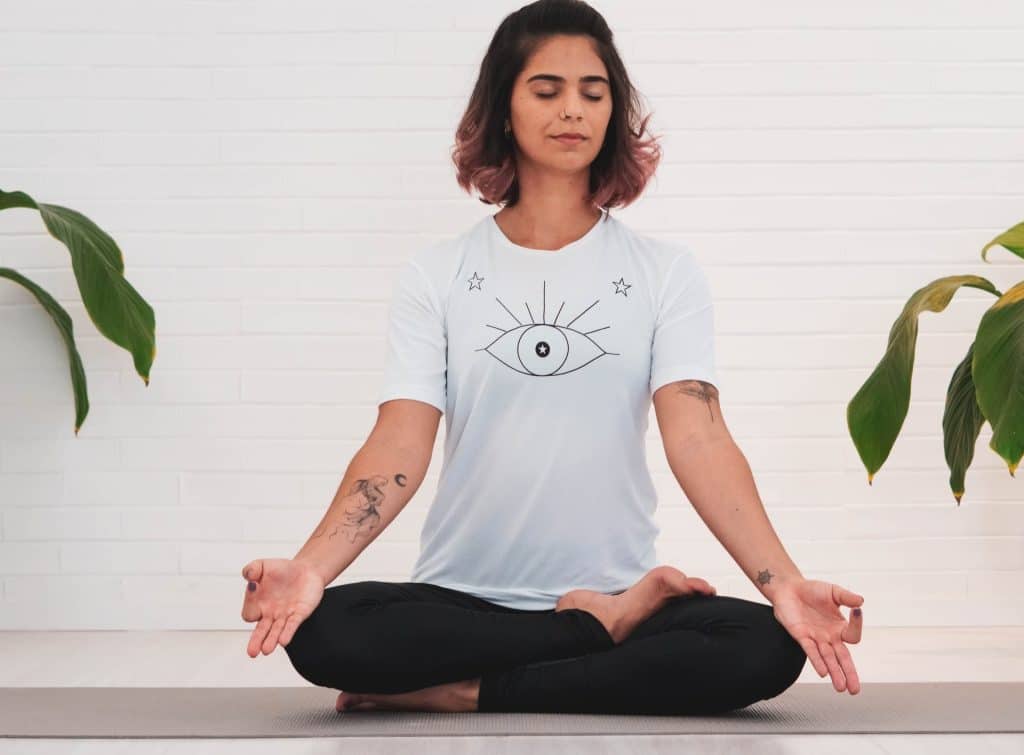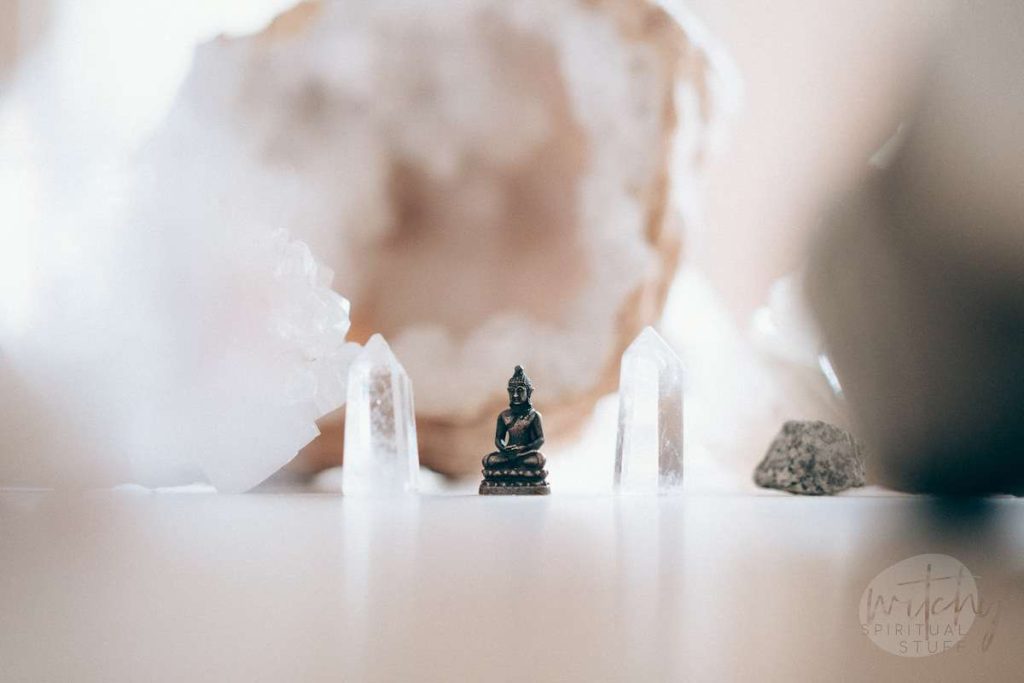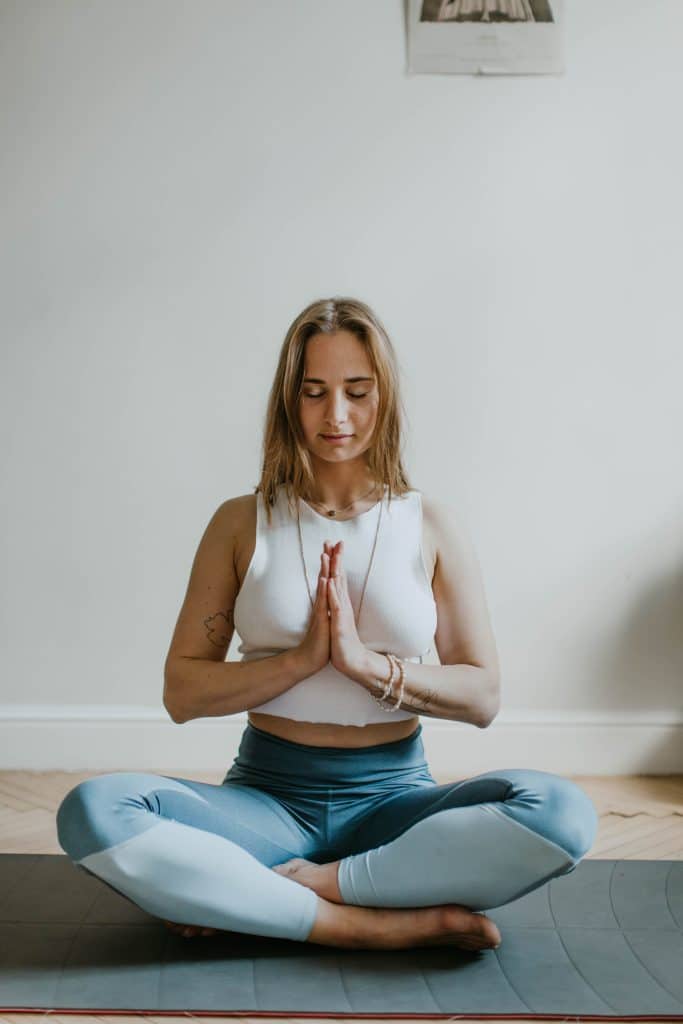SKY Breath Meditation: What It Is and How to Do It
SKY breath meditation?
“If she tells me to count to ten and focus on my breath, I’m going to lose it.”
My hubby said this to me about a year ago when he was looking for a good cognitive behavior therapist.

Guess what the first thing the therapist told him to do when they discussed his struggles.
“Count to ten and focus on your breath.”
He didn’t lose it, fortunately, but he didn’t go back.
Look, it’s not the therapist’s fault. In fact, she was not even a therapist. She was a counselor, and she advised him, when he told her he needed more in depth help, to seek out an actual psychologist.
And my husband did not want to lose it because he did not think breathwork was helpful but because breathwork is so much more than “count to ten and focus on your breath.”
Proper breathing techniques can reduce stress levels, welcome positive emotion, improve social connectedness and energy levels as well as emotional states. Your everyday life can certainly be improved by meditation practices that include a breathing exercise.

Table of Contents
Breathwork
Indeed, breathwork may be one of the single more important parts of a healing journey. When you can consciously slow down your breathing, you can get yourself out of panic attack, you can lower your resting heart rate, and you can effectively lower inflammation in your body, restoring strength to your immune system.
You are healthier when you have a powerful breathwork practice, and that breathwork practice usually involves meditation.
Perhaps the best-known expert on breathwork is Wim Hof.
Hof’s approach is intensely scientific and rooted in biology and physiology.
He teaches us that one of the primary pillars of good health is proper breathwork.
It is both a blessing and a curse that our breathing is automatic.
Regulated by our autonomic nervous system, which is the system that sends signals from your brain to the rest of your body, our breathing happens spontaneously.
Obviously, that’s a good thing or we’d be too busy focusing on breathing all day to get anything done.
Unfortunately, our failure to ever focus on our breathing has sent our autonomic nervous system into almost entire autopilot.
When we can focus on breath, filling up our lungs entirely and emptying them out entirely, we can maximize on our nervous system’s ability to regulate all the other functions of our bodies.
We access our vagus nerve, which connects our brain to the rest of our body, we improve brain function, and independent research has shown that meditation minded people see significant changes in anxiety levels and higher performance in their parasympathetic nervous system.
We are more mindful of our internal mechanisms, and our bodies function at a higher capacity.
We have more energy throughout our day, we have more restful sleep, and we have more equanimity in all things.
The Wim Hof method is simple.
The Wim Hof Method
Step 1: Get Comfortable
Sit or lie down, however you feel most relaxed.
When I am in healing mode, I usually like to sit straight up with my feet flat on the floor. When I am aiming to enter a deep, meditative state, I lie down as it is a more relaxed position.
Step 2: 30-40 Deep Breaths
Next, you simply close your eyes, clear your mind, and count your breaths, fully inhaling to fill up your lungs, and fully exhaling to completely empty them. Do not apply force. Just allow. Do this in short, powerful bursts.

You may feel lightheaded and a tingling sensation in your fingers and feet.
Don’t worry. That’s normal.
Step 3: The Hold
Next, inhale one time, fully, as deeply as you can. Then let out all that air and hold your breath.
Hold your breath for as long as you can until you get the urge to breathe in again.
Step 4: Recovery Breath
Finally, draw that breath into your lungs, allowing your chest to expand and hold the breath for 15 seconds.
Let it go, and you have completed one full round of Wim Hof breathing.
You can repeat this cycle three or four times, and it is conducive to inducing meditation.
Meditation

It can be super annoying, just like when someone tells you to count to ten and focus on your breath, when someone tells you to “meditate.”
“What does that even mean???” You want to know.
“I’m just supposed to sit still for 10 minutes and not think?”
Well, kind of, but not exactly.
In meditation, the goal is to quiet your mind.
You want to release all thoughts that come through your head and clear the space there.
When you do this, you are allowing your mind to “reset,” and when you allow your mind to reset, you also allow your body to reset.
We have known for millennia that the body has its own self-healing mechanisms, as does the mind.
Virtually every single part of your body, including your brain, has the ability to heal, compensate, and/or regenerate.
The trouble is, we do so much to keep ourselves sick, physically and mentally.
If we could just get out of the way, we could allow for improving our physical and mental health.
That’s one of the primary purposes of meditation.
When we can heal, then we can grow.
When we can grow, we are unstoppable.
That’s when we begin accomplishing our goals and making our dreams become reality.
How to Meditate

There are various forms of meditation, but all of them involve breathwork.
You can begin, always with the Wim Hof practice because it is short and easy to remember. It should not take more than a few minutes, and then you are ready to meditate.
You can also meditate from either a sitting or lying position. Always aim to keep your back straight so that your energy can move through you unobstructed.
The most basic form of meditation is to simply sit for ten minutes, once you have induced a meditative state, and do a full body scan.
Check in with yourself and send love to all of the parts that are hurting you, or that may need a little extra attention.
These parts do not have to be physical, either. You can send love to your inner child, to your feelings, and to past traumas that you have not been able to release.
A more complicated meditation involves sitting for 45 minutes to an hour and entering a deep meditative state where you connect fully with the divine, allowing Source Energy to enter your body and fill you up with love and light.
If you’ve got an hour for meditation, this is an amazing way to start your day.
SKY Breath Meditation
SKY Breath Meditation is a technique that combines all we have discussed here – conscious breathwork, a body scan, and a meditative state.
The SKY practice is a simple way to include the most powerful breathing technique of our times into daily life for stress relief and stress reduction.
SKY breath meditation is particularly helpful for people like my husband who don’t want to be told to count to ten and focus on their breath, or to simply not think negative thoughts.
SKY taps into that autonomic nervous system we talked about earlier, and immediately interferes with panic and anxiety, bringing your heart rate down, slowing your breath, and getting you out of your head.
SKY stands for Sudarshan Kriya Yoga, and it is a type of cyclical controlled breathing practice with roots in traditional yoga.

Much like with the Wim Hof method, you will cycle through four different types of breathing:
Ujjayi – Victorious breath
Bhastrika – Bellows Breath
Om – Chanting
Sudarshan Kriya
As with other meditative practices, make yourself comfortable first, either lying down or sitting with your back straight.
Then begin the cycle.
First, take the slow breath, where you take two to four breaths per minute. This increases the airway resistance during inspiration and expiration and controls airflow so that each phase of breath cycle can be prolonged to an exact count.
Next, you rapidly inhale air and then push it out forcefully at a rate of 30 breaths per minute.
Then, you chant “om” three times with a prolonged expiration. Really draw out your “Ooooooooooommmmmmmmmmmmm.”
Finally, cycle through all three repeatedly, which completes Sudarashan Kriya.
Before I meditate, using any breathing technique, I like to do about 20 minutes of yoga to really stretch my body and get ready to awaken my mind. This also opens up your airways and gets your blood circulating, letting your body and mind know that you are stepping in to take control.
Realize that for most of us, we are operating on autopilot for most of our days – indeed, for most of our lives.
So warning your autonomic nervous system and your subconscious mind that you are stepping in is helpful for avoiding shock and resistance.
Your nervous system and subconscious do not want to relinquish control. They have been playing out your old stories in your head, reliving old trauma, and reacting to your triggers for most, if not all, of your life.
Why would they stop now?

SKY breathing meditation, especially if it follows some light yoga and Wim Hof breathing, can help you regain control of your body and mind, hit that reset button, and get everything back to homeostasis, where your body is self-healing, and your mind is in a constant state of relaxed awakening.
The great thing is that most people see remarkable results within just a week or two of daily practice.
And hey, it certainly can’t hurt to try!
Happy manifesting!






